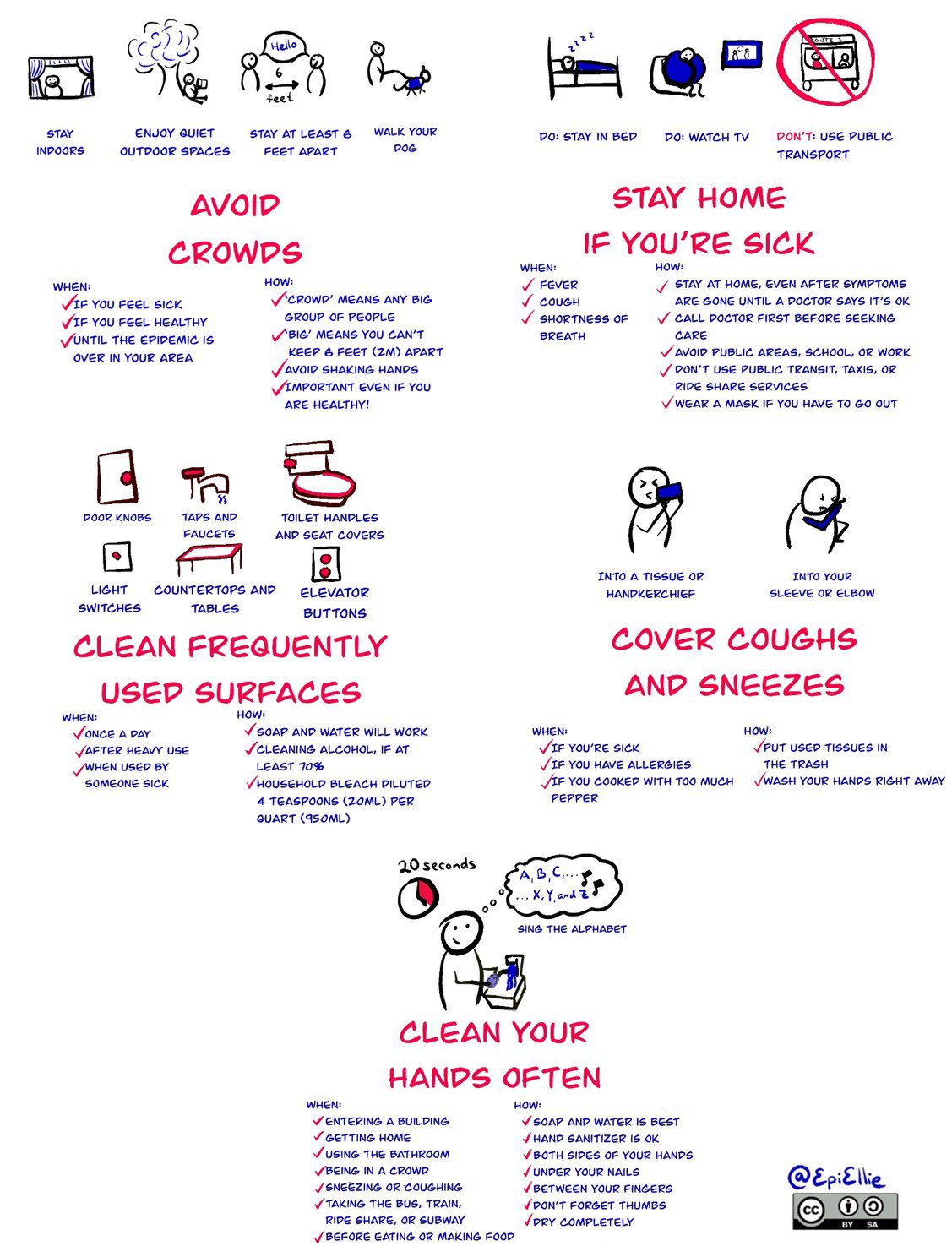
Me, playing with my kids while practicing ‘social distancing’
If we’re friends on Facebook and you’re reading this, you’re probably thinking ‘here she goes again!’ Sorry! Just kidding, not sorry. 😀 I’ll continue to share evidence-based information and recommendations until I tire, if that’s what it takes for us to get a handle of the Covid-19 (novel coronavirus) situation.
Our family has very actively practiced social distancing. I get it, it can he hard. We’re privileged to have the space to spread out throughout the house, to have space where we can play outside in ‘isolation’, and have tons of things to keep ourselves busy with, including my dog who seems to think I have nothing better to do than pick up after her. 
Our two boys also seem to think that if friends aren’t around, they can’t play outside. Better yet, they specifically said “We can’t play because we don’t have anyone to play with.” Um, HOW ABOUT WITH EACH OTHER?! Sigh. Being indoors for extended periods of time can make them cranky and prone to bickering, so off we went to play outdoors, together. For four hours, we played baseball, basketball (me, pictured above, making a straight foo’ out of myself), rode bikes and scooters, and basically ran amok. Then, I took Advil because I’m old and out of shape. But, I digress… 🙂
On Facebook, I’ve shared a number of articles on social distancing. Here are a couple you can read while you’re social distancing. The two articles, linked here and here, give great guidance about what ‘social distancing’ means and what activities are recommended and not recommended at this time. The Washington Post also has a fantastic article demonstrating social social distancing either speeds up or slows the spread of infection. In short, it is simulating what we see in this figure from a working paper written by Famulare and others, demonstrating model-based estimates of COVID-19 burden in King and Snohomish counties through April 7, 2020, a collaboration between the Institute for Disease Modeling, Bill & Melinda Gates Foundation, Fred Hutchinson Cancer Research Institute.
In short, the paper and this figure suggests that even a 25% reduction in contact between people can have a significant effect on the number of people being infected and ultimately getting sick.
So, why does that matter??
The biggest threat Covid-19 presents is burden on hospitals, health care workers, and our infrastructure in general. Dr. Michael Saag, world renowned infectious disease physician put this into perspective in an article he published in AL.com last week:
“Here is a scenario to illustrate what seems likely to happen in Alabama over the next 10 weeks:
· With a doubling rate of infection of 5 – 6 days, cases rise exponentially over time.
· This means that we can go from 50 cases to 25,000 cases in 10 weeks.
· If 20% (5,000) of these patients are significantly ill, at least half of them will need to be in the hospital (2,500).
· Of those, at least half will need to be cared for in the ICU (1,250). And once in the ICU, they could remain there for weeks, clogging the ability to admit new patients to the ICU.
· And this scenario is only after 10 weeks; at 20 weeks from now, there could be up to 500,000 total cases or more in Alabama (you can do the ICU math).
UAB hospital has up to 300 ICU beds; other hospitals in Alabama have fewer ICU beds. And in all hospitals in Alabama today, most of those beds are already occupied. It is easy to see that hospital beds, especially ICU beds, will be in short supply as the coronavirus epidemic unfolds.
So the question then becomes: Where do the new, coronavirus patients with severe disease go?
Italy currently gives us some tragic insight. In Lombardy, Italy, last week, up to 200 patients needed admission to the hospital. But there were no more beds available. So the physicians had to scour the hospital making difficult decisions about which patients were too sick to recover and discharge them home to die in order to make room for those who had a chance to live. And I just heard from a colleague in Switzerland. They are on the verge of having to make the same decisions. No one wants to ever be in that gut-wrenching position.”
The following visual is making the rounds on Facebook and Twitter, demonstrating that social distancing efforts have worked well in the past, including during the 1918 Pandemic Flu. Some cities followed recommendations well, and others not so well. Below you can see the effect that social distancing had on the city of Philadelphia vs St. Louis.

Image credit: Washington Post
Many people have been quoted in the past saying something like “if we don’t learn from our past, we are doomed to repeat it”. I’m saying the same thing now. Public health experts are suggesting we simply try social distancing so we can help “flatten the curve”.
We are actively trying to reduce the number of people who get sick all at once, so that we give each person who gets SUPER sick, a legitimate fighting chance at 1) a hospital bed, 2) ventilator, 3) staff and personnel available to care for them, if needed.
:no_upscale()/cdn.vox-cdn.com/uploads/chorus_asset/file/19780273/flattening_the_curve_final.jpg)

My friend, Dr. Ellie Murray created this graphic help you remember what things you can do to help #flattenthecurve!

Credit: Dr. Ellie Murray of Boston University (epidemiologist)
Have I convinced you yet that social distancing is important??
PLEASE SAY YES.
So now what? Well, I’m sure you have lots of questions about, for example, what happens if I get sick; what if I’m pregnant…am I at risk?; what if I find out I was exposed to someone who was sick??
I planned to share some of the responses I have seen on Facebook from colleagues who are epidemiologists, infectious disease experts, and the like, however found that most of the answers were neatly covered on the Centers for Disease Control website. Topics include:
What are the symptoms and what should you do if you think you are sick?
Are my pets at risk for infection?
What if I’m pregnant, should I be worried?
What about schools and daycares??
Should I cancel upcoming travel?
And a number of other great topics, including whether your pets can get sick with Covid-19 and whether we should worry about our waterways/systems (the answer is no). Visit the CDC.org website for more information.
Intermountain health also has a great page with great information and visuals like the one below.
The biggest difference between Covid-19 and other viruses like the flu virus, for example, is that
you can infect other people BEFORE you even know you’re sick.
Refer to the period between the dotted lines, before people start showing symptoms in the figure below.

Are you mentally exhausted from reading all of this yet?? I know I’m exhausted just writing it! Friends. We are facing something completely unprecedented. We have never been faced with anything like this before. More so, this is something that is affecting all countries, even if it’s happening in waves. Dr. Tony Fauci, Director of the National Institute of Allergy and Infectious Diseases was on Meet The Press this morning and said, social distancing measures are currently not being practiced as they should. We need to do more.
I urge you, friends: Please practice social distancing as much as you can. If it works, we will help slow the spread. The field of public health will accept your criticism if you think we went overboard, if what we accomplished was a complete mitigation of the spread of disease. We would rather be responsible for doing too much and handling the situation TOO well, than handling the situation poorly. We are already at risk for increased spread because we have no idea how many people are out there currently infected, spreading virus.
“I think Americans should be prepared that they are going to have to hunker down significantly more than we as a country are doing,” Dr. Anthony Fauci, the nation’s top infectious diseases expert, said on NBC’s “Meet the Press.” Elderly people and those with underlying conditions need to be especially cautious.
Finally, please don’t forget: We are not just social distancing for ourselves. We are social distancing to protect all who are vulnerable, including ourselves should we happen to BECOME vulnerable. If there was ever a time in history for people to come together, the time is definitely now. As I stated in last week’s post, it is our moral and social responsibility to slow the spread and protect the vulnerable, including overburdening our hospitals and health providers. We can do this, friends. We can do it.
For additional questions, please refer to cdc.org, who.int, nih.gov, local health department COVID-19 info pages, or university websites who have information on COVID-19. If you’re on Twitter, feel free to follow me @berthahidalgo. I share and retweet a lot of information related to #COVID19. Many of us also have lists of people you can follow to stay up-to-date, including Dr. Carlos Del Rio, Dr. Natalie Dean, Helen Braswell, Dr. Ellie Murray, Dr. Jeanne Marrazo, Dr. Rachel Lee, Dr. Marc Lipsitch, Dr. Tedros Ghebreyesus of the WHO, Dr. Anand Iyer, and many others. Dr. Ellen Eaton has also crafted great posts on Facebook. There are many others, but these are the ones that come to mind immediately.
With that, I leave you and say, social distance like CHAMPS, friends!
